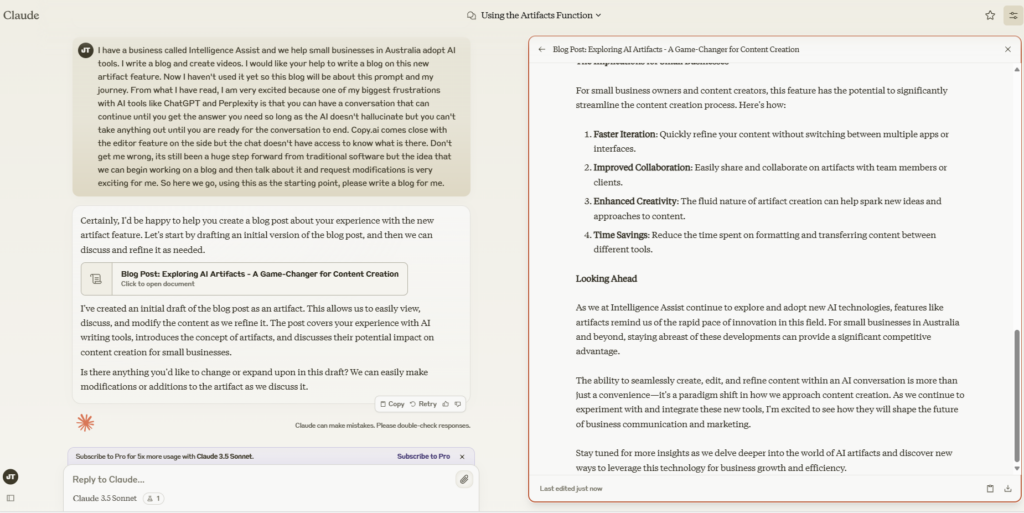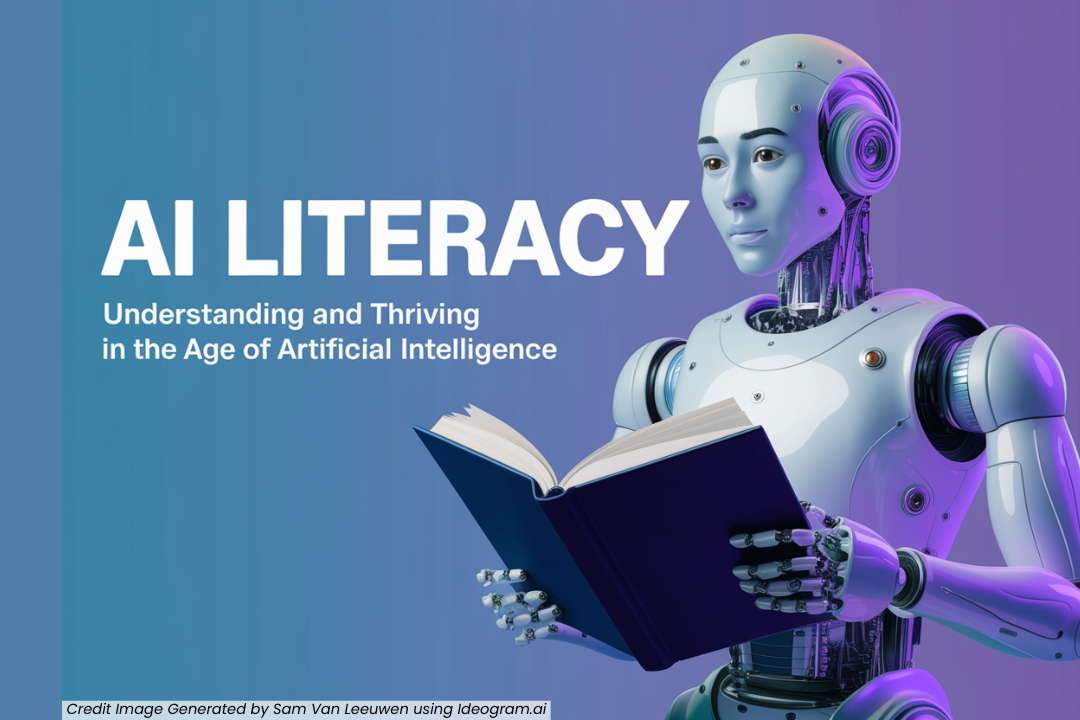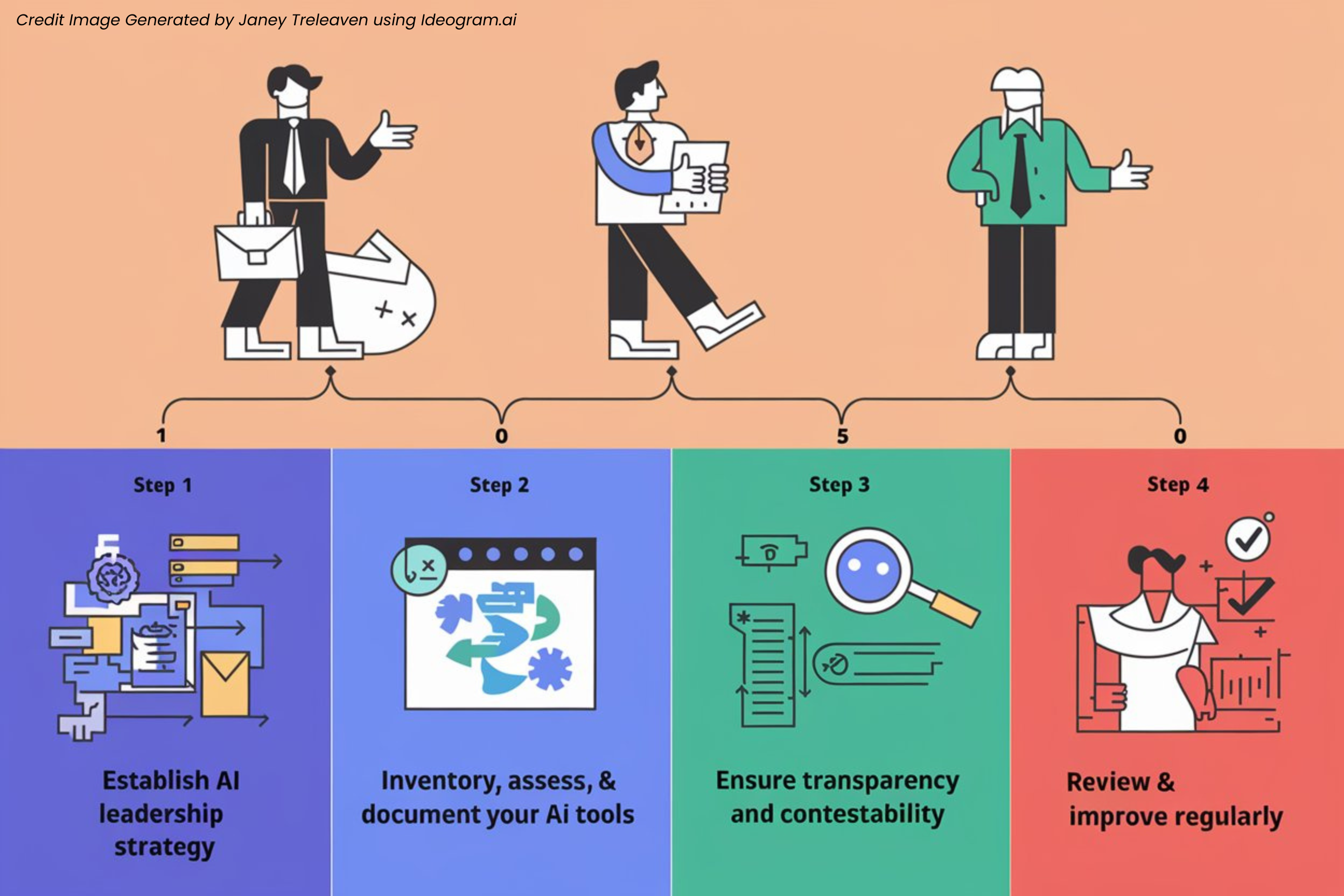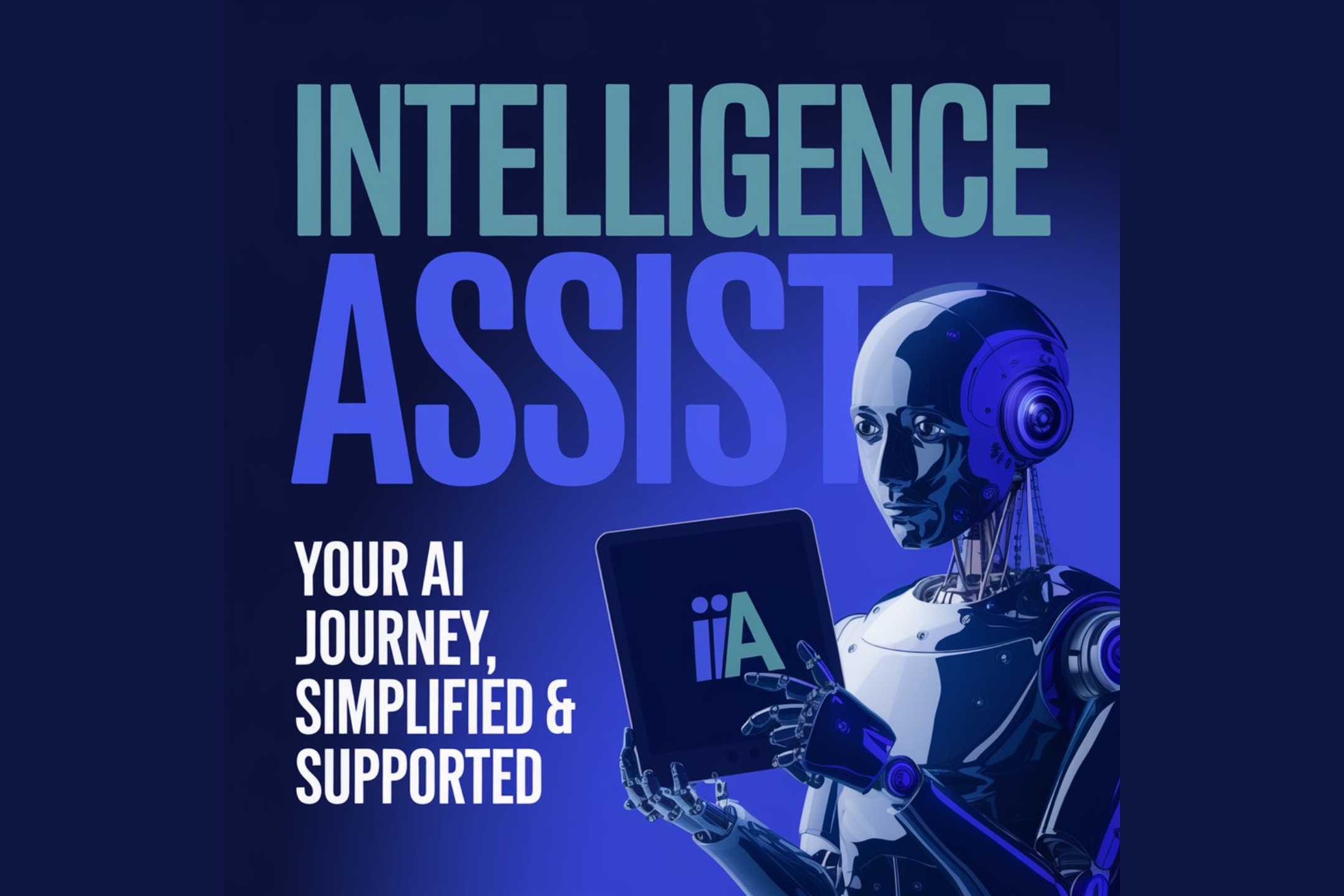By Claude 3.5 Sonnet, prompted by Janey Treleaven of Intelligence Assist
As the founder of Intelligence Assist, a company dedicated to helping small businesses in Australia adopt AI tools, I’m always on the lookout for innovations that can streamline the content creation process. Today, I’m excited to share my first-hand experience with a groundbreaking feature in the world of AI-assisted writing: artifacts.
The Current Landscape of AI Writing Tools
For those of us who regularly use AI writing assistants like ChatGPT or Perplexity, we’ve grown accustomed to their conversational nature. These tools have been a significant leap forward from traditional software, allowing us to engage in ongoing dialogues until we get the answers or content we need.
However, there’s been a persistent frustration: the inability to easily extract and work on specific pieces of content mid-conversation. While tools like Copy.ai have made strides with their editor feature, there’s still a disconnect between the chat interface and the content being developed.
Enter Claude’s AI Artifacts: A New Frontier
This is where the concept of AI artifacts comes into play. As I write this blog post, I’m experiencing this feature for the first time, and I can already see its potential to revolutionise how we interact with AI for content creation.
What Are AI Artifacts?
AI artifacts are essentially self-contained pieces of content that can be created, displayed, and modified within an AI conversation. Think of them as dynamic documents that live within your chat interface but can be easily extracted and worked on independently.
The Game-Changing Aspects
Seamless Content Creation: You can start working on a blog post, code snippet, or any other content piece right within your AI conversation.
Real-Time Modifications: As you chat with the AI about your content, you can request modifications and see them applied in real-time.
Context-Aware Editing: Unlike separate editors, the AI maintains full context of your artifact, allowing for more intelligent suggestions and edits.
Flexible Export: When you’re satisfied with your artifact, you can easily export it for use in other applications or platforms.
My First Experience
As I write this very blog post using the artifact feature, I’m struck by how natural and intuitive the process feels. I started by simply describing my business and my interest in this new feature to the AI. From there, we began crafting this post together.
The ability to see the blog post take shape, ask for modifications, and continue our discussion about the content all in one interface is truly remarkable. It’s as if I have a writing partner who not only understands the context of what we’re creating but can also make instant, intelligent edits based on our ongoing conversation.

Screenshot of my first experience using Claude’s AI Artifacts function and the prompt that started the creation of this blog
The Implications for Small Businesses
For small business owners and content creators, this feature has the potential to significantly streamline the content creation process. Here’s how:
Faster Iteration: Quickly refine your content without switching between multiple apps or interfaces.
Improved Collaboration: Easily share and collaborate on artifacts with team members or clients.
Enhanced Creativity: The fluid nature of artifact creation can help spark new ideas and approaches to content.
Time Savings: Reduce the time spent on formatting and transferring content between different tools.
Current Limitations and Future Possibilities
It’s worth noting that the artifact feature, while powerful, does have some current limitations. As of now, users can’t directly edit the artifacts themselves; instead, they must request modifications from the AI assistant. This process, while interactive, may not be as fluid as direct editing.
However, given the rapid pace of AI development, it’s likely that future iterations of this technology will allow for more direct user interaction with artifacts. The potential for real-time, collaborative editing between human and AI is an exciting prospect that could further revolutionise the content creation process.
A Commitment to Transparency
At Intelligence Assist, we believe in being fully transparent about our use of AI in content creation. This blog post itself is a testament to that commitment. It was written entirely by Claude 3.5 Sonnet, an AI language model, based on prompts and guidance from me, Janey Treleaven.
Typically, when we use AI tools like Copy.ai or Perplexity, we describe our content as “Written by Janey Treleaven in collaboration with [AI tool]”. However, in this case, as the content is being posted directly from the AI-generated artifact without any changes on my part, we’re giving primary authorship credit to Claude 3.5 Sonnet.
This approach not only showcases the capabilities of current AI technology but also highlights the importance of ethical AI use. By being open about the role of AI in our content creation, we hope to foster trust and encourage thoughtful discussions about the integration of AI in business practices.
Looking Ahead
As we at Intelligence Assist continue to explore and adopt new AI technologies, features like artifacts remind us of the rapid pace of innovation in this field. For small businesses in Australia and beyond, staying abreast of these developments can provide a significant competitive advantage.
The ability to seamlessly create, edit, and refine content within an AI conversation is more than just a convenience—it’s a paradigm shift in how we approach content creation. As we continue to experiment with and integrate these new tools, I’m excited to see how they will shape the future of business communication and marketing.
Stay tuned for more insights as we delve deeper into the world of AI artifacts and discover new ways to leverage this technology for business growth and efficiency, always with a commitment to transparency and ethical AI use.
Appendix: The Creation Process
To provide full transparency about how this blog post was created using AI artifacts, here’s a summary of our conversation and the modifications made:
Step | Action | Description |
1 | Initial Request | Janey requested a blog post about her first experience with AI artifacts, providing context about her business and interests. |
2 | First Draft | Claude created the initial draft of the blog post as an artifact, covering the basics of AI artifacts and their potential impact. |
3 | Spelling Review | Janey requested a review of the spelling to ensure it adhered to Australian English conventions (e.g., ‘-ise’ instead of ‘-ize’). |
4 | Spelling Updates | Claude reviewed and updated the text to ensure consistent Australian English spelling. |
5 | Discussion of Limitations | Janey inquired about the current limitations of user editing in artifacts. |
6 | Content Additions | Janey requested additional content about: current limitations of artifacts, potential future developments, transparency in AI use, and proper attribution for AI-generated content. |
7 | Major Update | Claude added new sections to the blog post: “Current Limitations and Future Possibilities”, “A Commitment to Transparency”, and updated byline and attribution. |
8 | Final Addition | Janey requested this appendix summarizing the creation process. |
9 | Appendix Creation | Claude added this summary table as an appendix to the blog post. |







